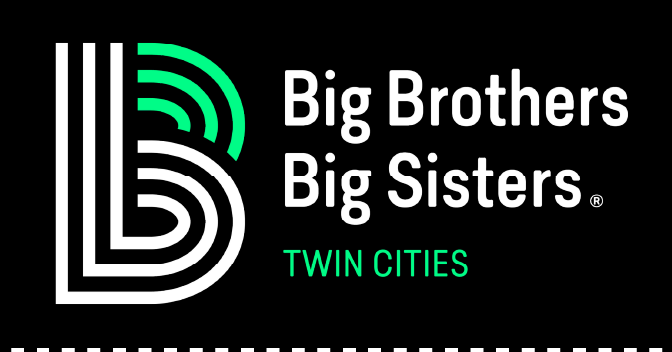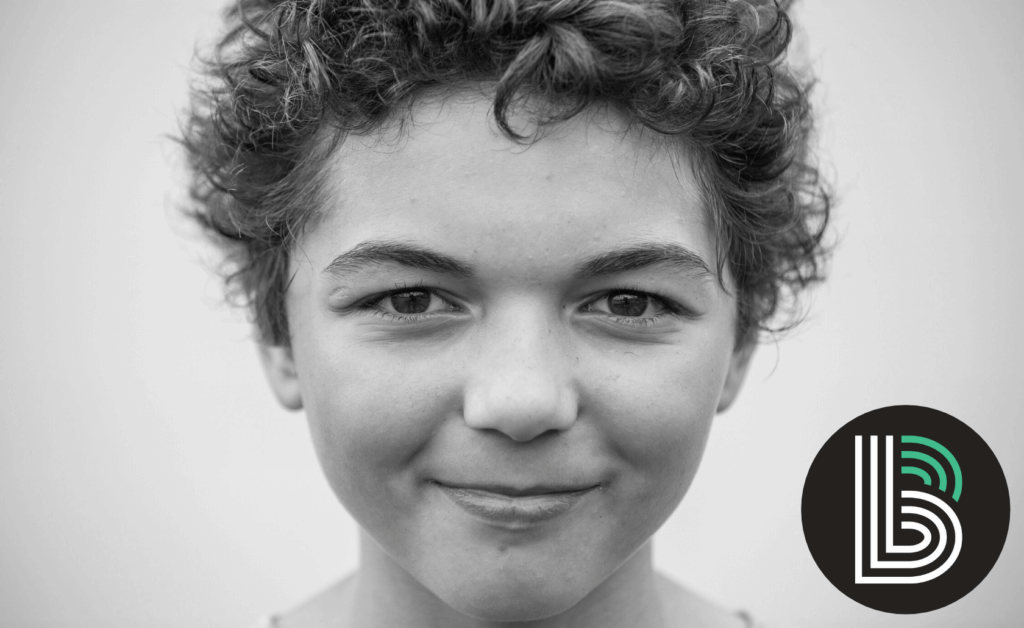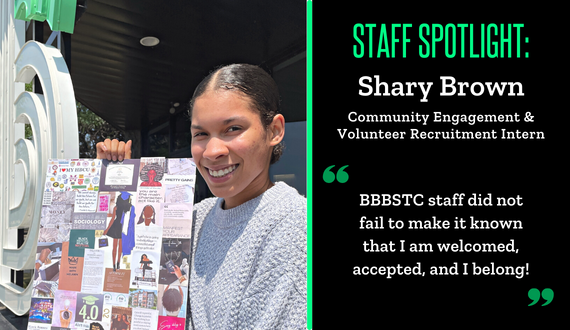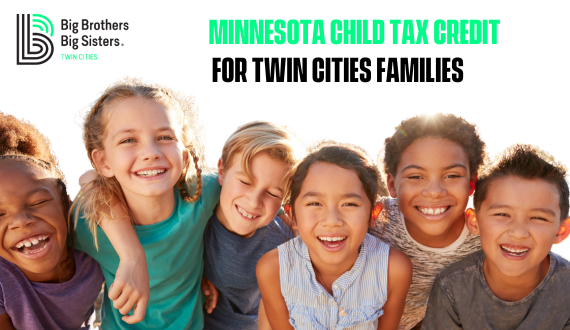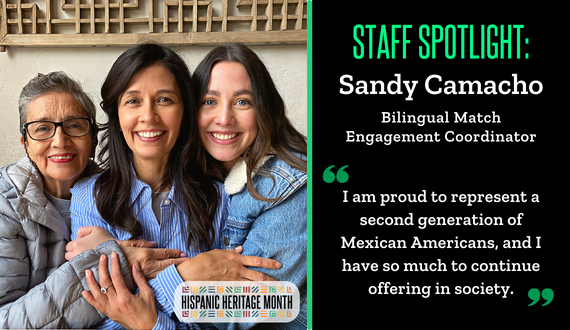
Staff Spotlight: Sandy Camacho on Hispanic Heritage Month
September 14, 2022, Katie Huynh
In honor of Hispanic Heritage Month, we interviewed Sandy Camacho, our Spanish Bilingual Match Engagement Coordinator, about her story as a Mexican American. Sandy shared her lived experiences and thoughts on the importance of Hispanic Heritage Month, and why it is relevant in youth mentoring work.
What is your ethnicity?
I am Mexican American. My biological father is Caucasian (Irish background born in Turkey’s U.S. military base), and my mother is Mexican (born in Mexico and holds dual Mexican and American citizenship). I am proud to identify myself as more Hispanic because I grew up in a strong Mexican household.
Why is Hispanic Heritage Month important to you? How is this month important for youth mentoring work?
Hispanic Heritage month is important to me because I get to express my culture with the world, especially since this month also highlights Mexico’s Independence Day on September 16th. This day is a fiesta-friendly holiday that celebrates our independence from Spain in 1810. It’s a special time in the Hispanic community because many other countries in Central and South America also celebrate their Independence Days from Spain during this month.
In the Twin Cities, the Hispanic community participates in colorful parades, with mariachi concerts and different music, as well as sharing amazing food that brings traditions to life among different generations. As a Spanish Match Engagement Coordinator, I have the opportunity to share my identity, customs, and traditions by connecting with youth and families in a very kind and motivational approach.
If you feel comfortable sharing, what were some struggles you faced during your childhood?
When I was a child, and even now, the color of my skin and eyes were not considered to be part of the Hispanic identity. I was considered a White American. There were times people would think my mom was my nanny instead of my mother just because we look different. People don’t realize that multiracial children can feel strongly connected to more than one ethnicity.
Even today, by looking at me, I am considered a White American female. I still feel the struggle of having to prove that I am Mexican as well. In high school, people were mean to students of different cultures. My Hispanic friends were called slurs, and I asked why I wasn’t being mocked or getting called names. The answer I got was, “You don’t look Mexican because your skin is so white”. When I was young, it hurt having to prove my heritage by speaking Spanish. I felt that was the only way my classmates, and people in general, would believe I was part Mexican. I felt like my identity wasn’t fully accepted.
What are some misconceptions and stereotypes about the Hispanic community you encounter?
Another struggle I faced is the misconceptions and stereotypes about the Hispanic communities. “If people speak Spanish, they’re probably from Mexico”. The U.S. shares borders with Mexico and many people assume the language comes from Mexico. At a young age, I was taught that many countries in Central and South America share the same Spanish language (Castellano from Spain) and yet, each culture is different. Some traditions, food, and celebrations, including some Spanish words and expressions are different.
Finally, a sad struggle for me over the years has been the stereotypes of hard-working people speaking Spanish and looking Hispanic deemed them as a lower class race in this country. I know Hispanics of many countries are working very hard with jobs rejected by other ethnicities. These hard-working people are kind, extremely caring of their families, and well educated in ways, like high values and morals, that colleges at times don’t educate students. There are also many Hispanics working in professional fields with an extraordinary capacity to provide communities with their service, and yet, the color of their skin and their accent would make others patronize them.
How would you reflect on your experience growing up with your identity?
Growing up as a second-generation Mexican American with white skin and blue eyes, I found myself wanting to connect with the Hispanic culture more than my Mexican American friends with immigrant parents. When I was in high school, there was a lot of social pressure to assimilate, and my friends wanted to do the opposite of me. They embraced American culture more than their Hispanic culture, whereas I wanted to blend in with the Hispanic culture. Therefore, I show a strong Hispanic presentation to the world by learning to speak, read, and write Spanish, sharing my traditions with my friends of all backgrounds, such as Dia de Reyes (Three Kings Day), and Dia de Los Muertos (Day of the Death), Dia de Nuestra Señora de Guadalupe (Our Lady of Guadalupe Feast), etc.
Do you have any advice or insight you would like to share with Hispanic youth?
With my role as the Bilingual Spanish Match Engagement Coordinator and working with Spanish-speaking families, my advice for all families is to share our beautiful and valuable Hispanic heritage with the youth – to love and accept every part of yourself. Everyone is different, comes from different backgrounds, and has different traditions – learn as much as you can from family and friends, and be proud of who you are. I am proud to represent a second generation of Mexican Americans, and I have so much to continue offering in society.
